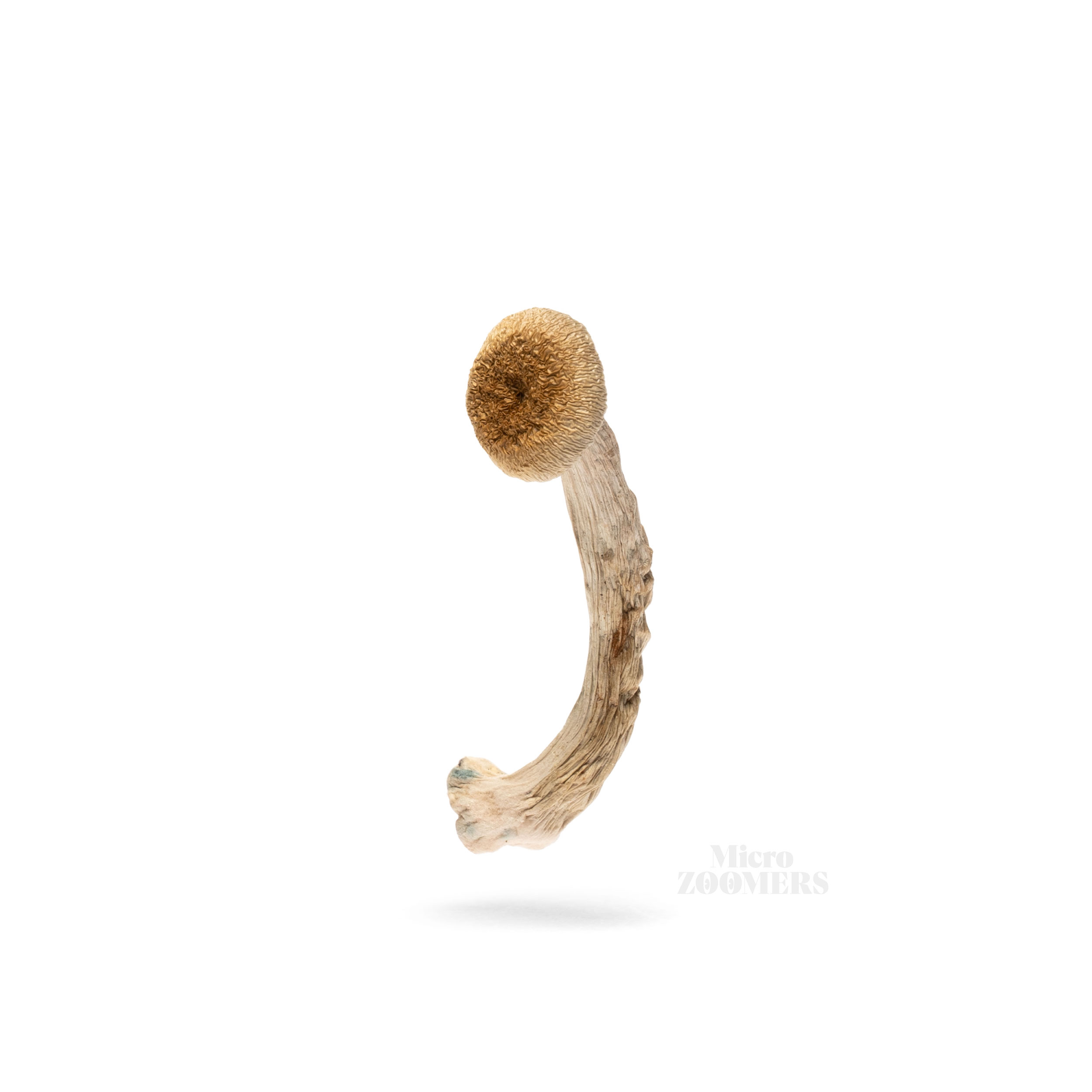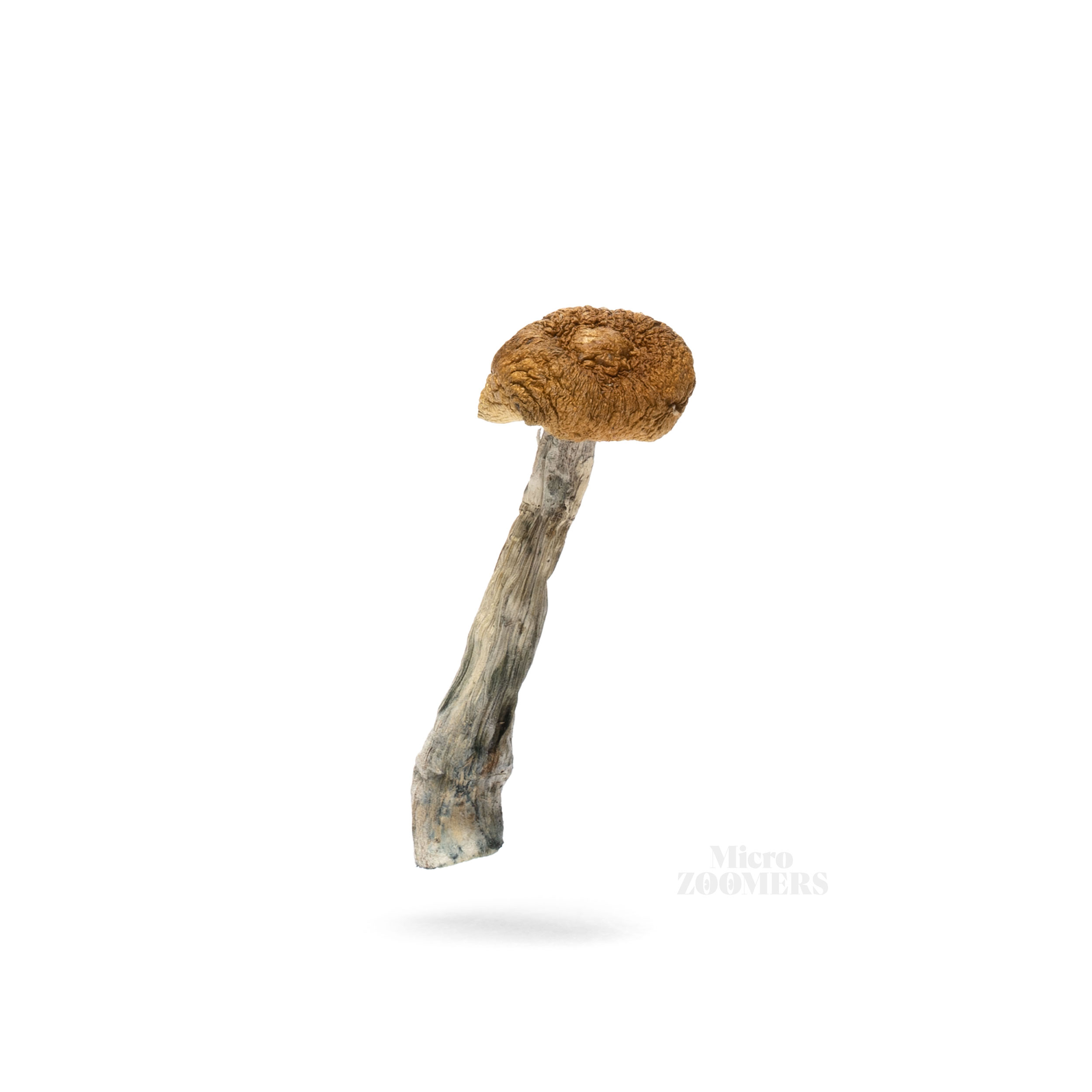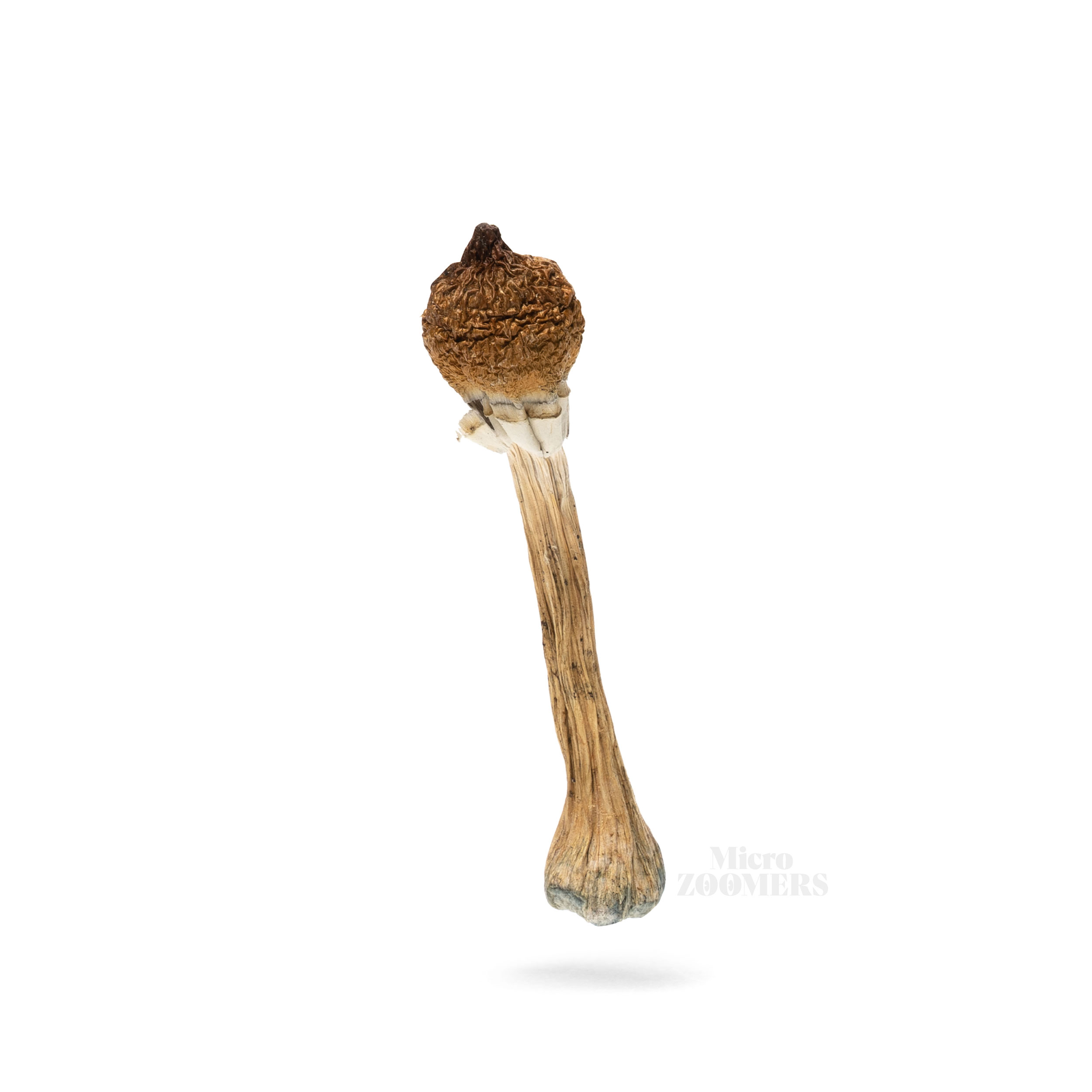
PSILOCYBE MEXICANA
Psilocybe mexicana, a magic mushroom strain from the subtropical regions of Mexico, was the glorious specimen from which, in 1958, Swiss chemist Dr. Albert Hofmann (discoverer of LSD) isolated, synthetized and named the principal psychedelic compounds psilocybin and psilocin. The compound itself, was named after the Psilocybe genus from the Greek roots psilos “bare and kybé “head”, “bald head”.
Psilocybe mexicana’s tall, thin stature and its nipple-like cap resembles a lot Liberty caps aka Psilocybe semilanceata; for that reason, it is often referred to as the Mexican Liberty Cap. Both species have affinities for similar habitats and grow a sclerotia that can also be consumed. Psilocybe authority Stamets says Psilocybe Mexicana is to subtropical grassland what P. semilanceata is to temperate grassland.
This very special magic mushroom strain is amongst the shamanic fungi consumed two thousand years ago in sacred ceremonies by the Aztecs. It is the most sough after and prized specie preferred by the Mazatec healers in Oaxaca. Known by the name teotlnanácatl, from the Nahuatl language: teotl “god” and nanácatl “fungus” or “god’s flesh” or “sacred flesh”, these mind-altering organisms were believed to be a connection to the sacred, the beyond. They were consumed fresh or dried, mixed in honey or served with chocolate.
The many endearing epithets P. mexicana has all resonate with its small size, joyous and transformative nature: Angelitos (little angels), Chamaquitos (the kids), Pajaritos (little birds) or Nizé (little birds in Nahuatl). It seems this strain inspires both youth and reason, something light, something deep: like an old soul in a child’s body.
Said to have a moderate to high potency similar to the Allen strain and P. atlantis, it is a popular choice for those seeking recreational or spiritual experiences. Albert Hofmann’s, who consumed 32 separate specimens of P. mexicana over the course of months reported in his book “The Botany and Chemistry of Hallucinogens” that “all voluntary efforts to look at things in their customary forms and colours were ineffective.” For him psychedelics were a tool to help us be who we were supposed to be: attentive, creative, joyful, contemplative, and grounded beings.
Visual Description
PSILOCYBE MEXICANA Potency
Habitat Origin





